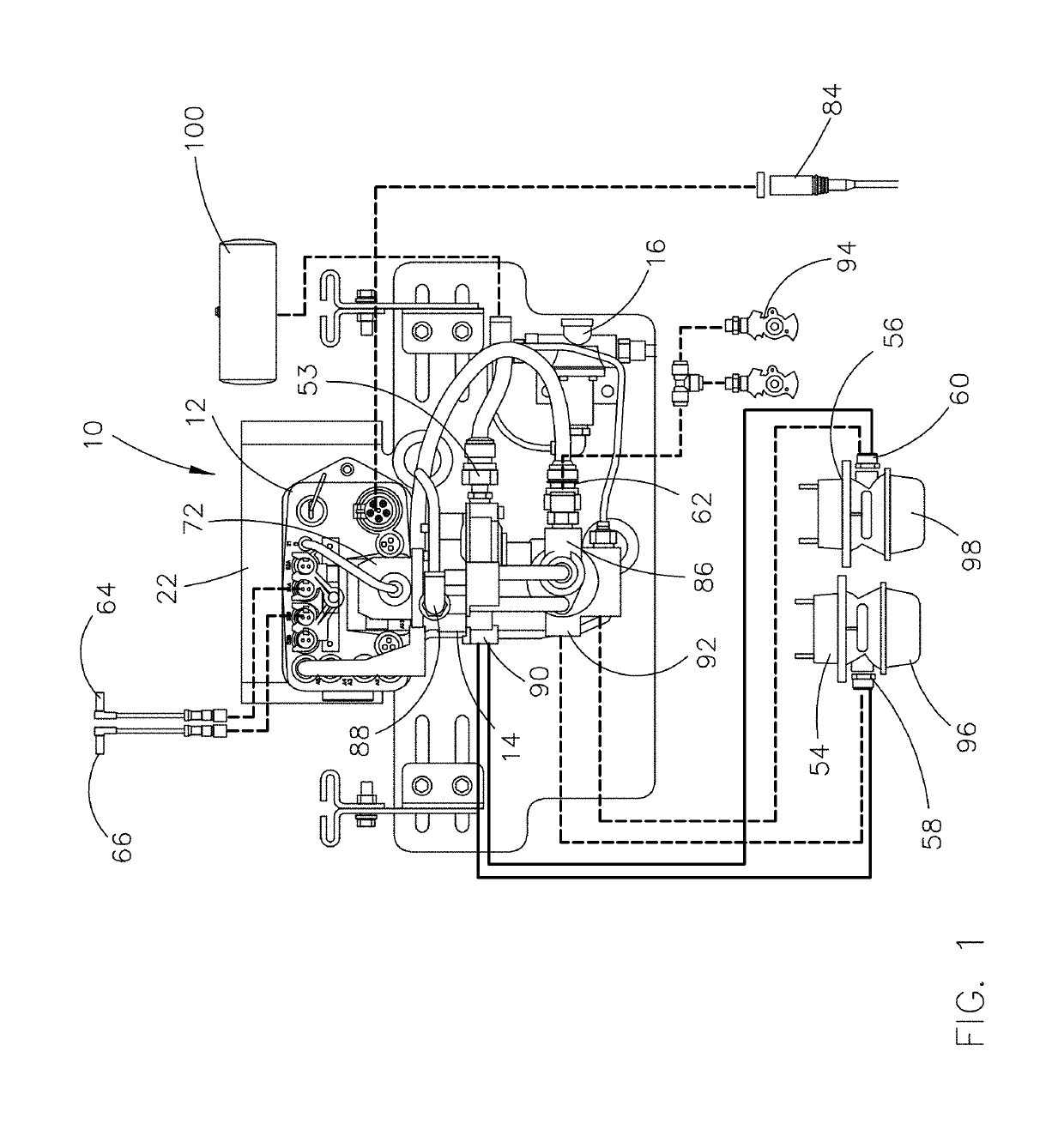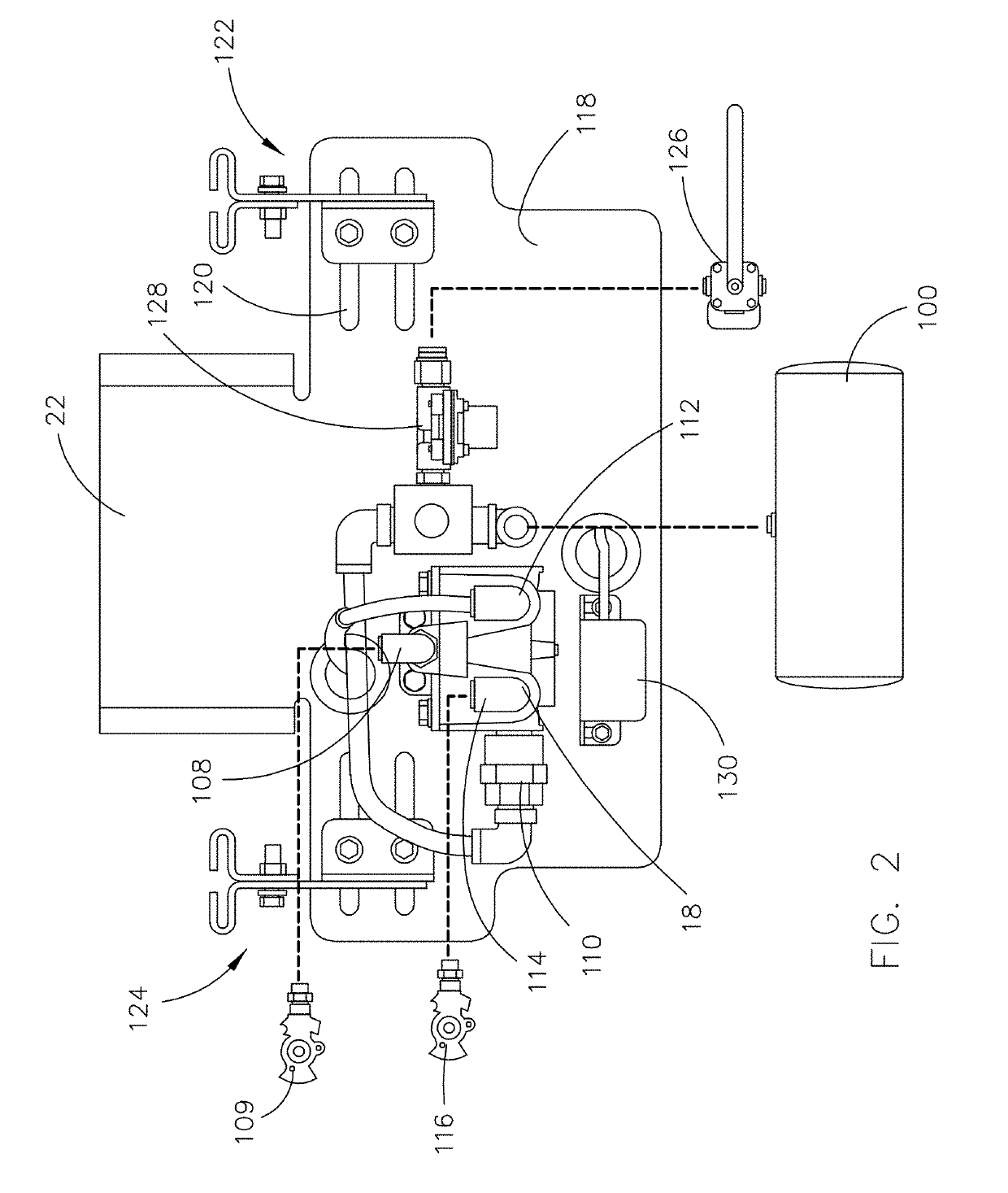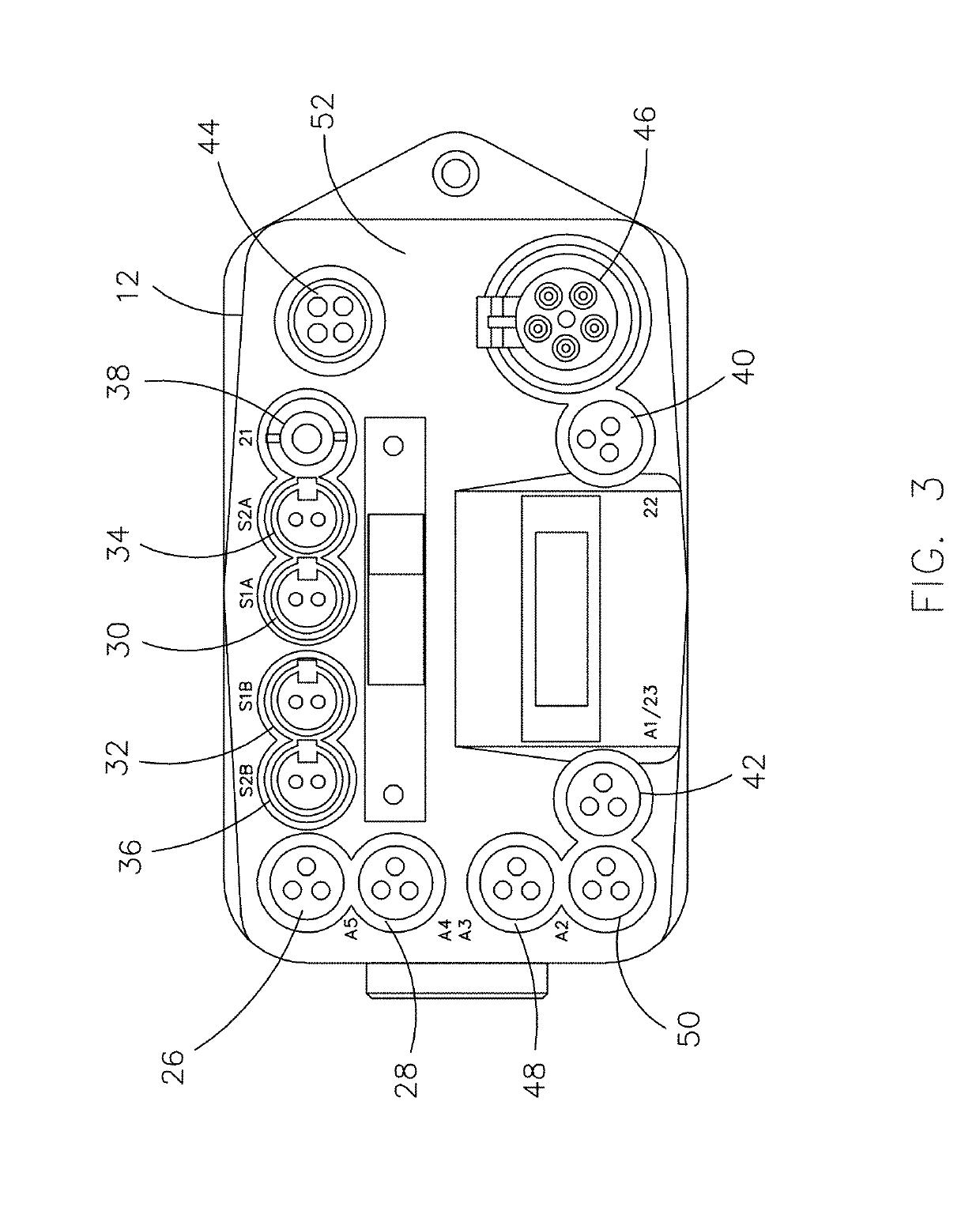A loss of
compressed air in typical
air brake systems means that the power spring applies a braking force to prevent the vehicle from moving.
There may be enough air pressure in the system to allow for operation of the vehicle, but the vehicle may suffer from brake drag, meaning the air pressure is not high enough to completely overcome the power spring such that the brake is partially applied during normal driving operation.
Many problems relating to the air supply to both the service and emergency systems occur with prior art systems.
For example, with current systems, the emergency / supply line extends to the braking mechanism adjacent to the wheel, and is therefore, subject to damage.
If the emergency / supply line becomes damaged, there is no way to determine this if the service /
control line continues to function, even if it is only partially functional.
Likewise, incorrect connection of supply hoses when a
braking system is removed for servicing and re-installed may occur.
If, for example, the emergency / supply line is incorrectly re-installed, upon failure of the primary supply line, the braking system will not function.
Another air related problem that exists for prior art systems is the provision of service / control air pressure to the trailer when the brakes are not applied.
If, for example, there is an
air leak from the
tractor to the trailer on the service / control pressure line at all times. Still another problem that prior art systems face is the service / control and emergency / supply lines can deliver inadequate pressure due to obstructions or leaks within the air lines.
If, for example,
moisture in a pressure line freezes and obscures the air pressure line or an
air line cracks or gets damaged by
road debris.
Another problem that prior art systems face is the provision of stoplight power to the trailer when the brakes are applied.
Additional problems with prior art systems include the lack of input data to the brake monitor.
For example, prior art systems do not provide wheel speed data on the power line from a faulty Anti-Lock
Braking System (ABS) controller.
If, for example, the ABS controller has failed or the wheel speed sensors are faulty or have an excessive gap with the
exciter ring, then the ABS ECU cannot detect or transmit individual wheel speeds.
Similarly, incorrect connection of the 7-conductor
electrical connection to the towed vehicle leads to problems in prior art systems.
Still another problem that prior art systems face is incorrect air connections to the dolly that connects two trailers together.
Incorrect connection of service / control or emergency / supply hoses will cause a various number of failure conditions.
Likewise, another problem that prior art systems face is incorrect connection of supply hoses when a braking system is removed for servicing and re-installed.
If, for example, the emergency / supply line is incorrectly re-installed, upon failure of the primary supply line, the braking system will not function.
Another problem that prior art systems face is the service / control and emergency / supply line glad-hand shut-off valves at the rear of the trailer.
If, for example, the
service line glad-hand shut-off valve is shut off to the towed vehicle causing a failure of the service / control line, the service braking system will not function.
A loss of electrical power may cause these systems to be non-functional, which would generally be apparent.
However, in a situation with reduced or relatively lower power, the systems may not be completely prevented from functioning, but system function and operation may be substantially impaired.
Further, conventional trailer
brake control systems do not include a
modular design (e.g., allowing the system to be quickly removed and replaced upon failure to keep the vehicle in operation), the ability to
handle a 4S (“sensor”) / 3M (“modulator”) configuration with a single trailer control module, a controller
area network port allowing the system to transmit data to, and receive data from, other components in a high-speed manner, and a brake
monitoring system (e.g., a system that monitors pressure in service and
emergency brake pressure lines) that is integrated in a trailer control module with a wheel speed monitoring and ABS
control system.
 Login to View More
Login to View More  Login to View More
Login to View More 


